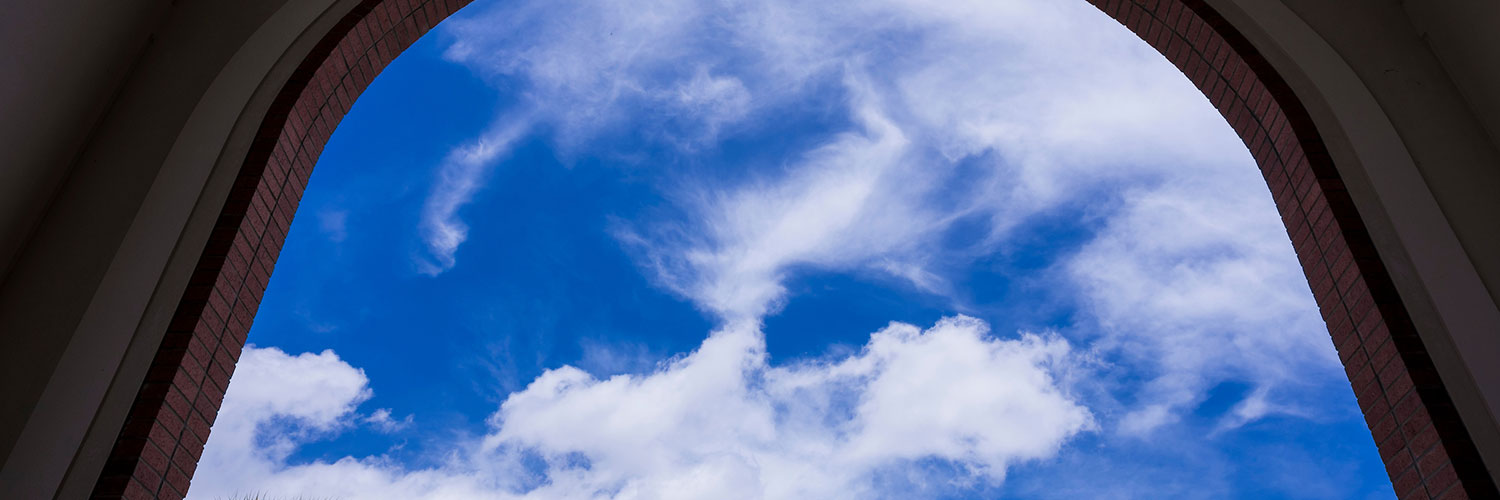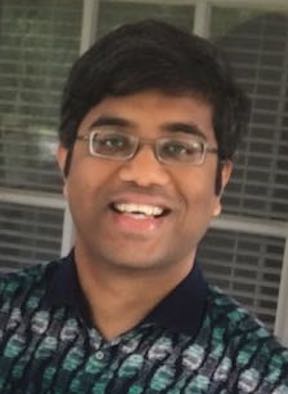
Lingam, Manasvi

Manasvi Lingam
Assistant Professor | College of Engineering and Science - Aerospace, Physics and Space Sciences
Affiliate Faculty | Chemistry and Chemical Engineering
Contact Information
Personal Overview
.After completing my undergraduate degree in Engineering Physics at the Indian Institute of Technology (Bombay), I moved to the USA and obtained my Ph.D. in Physics at The University of Texas at Austin. Afterwards, I undertook postdoctoral research at Princeton University, and had postdoctoral fellowships at Harvard University and the Center for Astrophysics | Harvard & Smithsonian. I am currently an Assistant Professor in the Department of Aerospace, Physics and Space Sciences - and an Affiliate Faculty in the Department of Chemistry and Chemical Engineering - at the Florida Institute of Technology.
My research interests are situated primarily within the transdisciplinary area of astrobiology. As a theorist, my research is mostly oriented towards modeling (i.e., both pen-and-paper calculations and numerical simulations) the following areas:
1. Laws of Living Systems: uncovering the (bio)chemical and (bio)physical processes that shape (extra)terrestrial life in diverse environments
2. Habitability: understanding how stellar processes (e.g., electromagnetic radiation, winds, space weather), planetary factors (e.g., magnetic fields, tidal forces, oceans), and high-energy astrophysical phenomena in the Milky Way (e.g., active supermassive black holes) regulate the potential for life.
3. Biosignatures and Technosignatures: identifying possible biosignatures (e.g., microfossils) and technosignatures (e.g., chlorofluorocarbons) and assessing their detectability.
4. Space Exploration: designing life-detection missions to targets in the solar system (e.g., Venus, Europa, Enceladus, Planet 9) and beyond (e.g., interstellar objects and free-floating planets) using conventional (e.g., chemical rockets) and novel (e.g., light sails) propulsion systems.
As my Ph.D. and initial postdoctoral research was in plasma physics, I continue to work sporadically in this field. Areas that I have investigated over the past several years include Hamiltonian and Lagrangian formulations for plasma models, fluid models that accurately encapsulate collisional effects, generation of small- and large-scale magnetic fields, magnetic turbulence (e.g., in the solar wind), and fast magnetic reconnection believed to drive explosive phenomena such as stellar/solar flares.
Finally, I have dabbled in a few other areas such as energetic constraints on early human evolution; deep learning applications to astrodynamics; electronic structure calculations of photosynthetic pigments; and the history and philosophy of science.
Educational Background
Ph.D. in Physics, The University of Texas at Austin (2010-15)
B. Tech in Engineering Physics, Indian Institute of Technology - Bombay (2005-09)
Professional Experience
Assistant Professor, Department of Aerospace, Physics and Space Sciences, Florida Institute of Technology (2019-present)
Affiliate Faculty, Department of Chemistry and Chemical Engineering, Florida Institute of Technology (2023-present)
Research Fellow, Department of Physics, The University of Texas at Austin (2021-present)
Postdoctoral Fellow, Institute for Theory and Computation, Center for Astrophysics | Harvard & Smithsonian (2017-19)
Postdoctoral Fellow, John A. Paulson School of Engineering and Applied Sciences, Harvard University (2016-17)
Postdoctoral Research Associate, Department of Astrophysical Sciences, Princeton University (2015-16)
Current Courses
PHY 2002H - Physics 2 (Honors)
PHY 5017 - Electromagnetic Theory 1
PHY 5015 - Analytical Mechanics 1
PHY 2002 - Physics 2
SPS 4039 - Astrobiology
SPS 4201 - Astrobiology 2
SPS 5088 - Graduate Astrobiology
SPS 4035 - Comparative Planetology
SPS 4045 - Physics and Chemistry of Planet Formation
SPS 5021 - Space Physics 2
SPS 5088 - Astrochemistry
Selected Publications
Books
Life in the Cosmos: From Biosignatures to Technosignatures
M. Lingam & A. Loeb, Harvard University Press (2021)
[the first quantitative & graduate-level textbook on astrobiology]
Selected papers (out of 100+ in total)
A light sail astrobiology precursor mission to Enceladus and Europa
M. Lingam, A. Hibberd & A. Hein, Acta Astronaut., 218, 251 (2024)
Information Transmission via Molecular Communication in Astrobiological Environments
M. Lingam, Astrobiology, 24, 84 (2024)
Planetary Scale Information Transmission in the Biosphere and Technosphere: Limits and Evolution
M. Lingam, A. Frank & A. Balbi, Life, 13, 1850 (2023)
Chasing nomadic worlds: A new class of deep space missions
M. Lingam, M. Eubanks & A. Hein, Acta Astronaut., 212, 517 (2023)
A Bayesian Analysis of Technological Intelligence in Land and Oceans
M. Lingam, A. Balbi & S. M. Mahajan, Astrophys. J., 945, 23 (2023)
Beyond mediocrity: how common is life?
A. Balbi & M. Lingam, Mon. Not. R. Astron. Soc., 522, 3117 (2023)
The Possible Role of Body Temperature in Modulating Brain and Body Sizes in Hominin Evolution
M. Lingam, Front. Psychol., 12, 774683 (2022)
Tidal modulations and the habitability of exoplanetary systems
M. Lingam, S. Pryor & I. Ginsburg, Mon. Not. R. Astron. Soc., 510, 4837 (2022)
Interstellar Now! Missions to Explore Nearby Interstellar Objects
A. M. Hein, T. M. Eubanks, M. Lingam, A. Hibberd, D. Fries, J. Schneider, P. Kervella, R. Kennedy, N. Perakis & B. Dachwald, Adv. Space. Res., 69, 402 (2022)
Excitation Properties of Photopigments and Their Possible Dependence on the Host Star
M. Lingam, A. Balbi & S. M. Mahajan, Astrophys. J. Lett., 921, L41 (2021)
A brief history of the term ‘habitable zone’ in the 19th century
M. Lingam, Int. J. Astrobiol., 20, 332 (2021)
Theoretical Constraints Imposed by Gradient Detection and Dispersal on Microbial Size in Astrobiological Environments
M. Lingam, Astrobiology, 21, 813 (2021)
A Precursor Balloon Mission for Venusian Astrobiology
A. M. Hein, M. Lingam, T. M. Eubanks, A. Hibberd, D. Fries & W. P. Blase, Astrophys. J. Lett., 903, L36 (2020)
M. Lingam & A. Loeb, Astrophys. J., 894, 36 (2020)
Constraints on Aquatic Photosynthesis for Terrestrial Planets around Other Stars
M. Lingam & A. Loeb, Astrophys. J. Lett., 889, L15 (2020)
Active Galactic Nuclei: Boon or Bane for Biota?
M. Lingam, I. Ginsburg & S. Bialy, Astrophys. J., 877, 62 (2019)
Colloquium: Physical constraints for the evolution of life on exoplanets
M. Lingam & A. Loeb, Rev. Mod. Phys., 91, 021002 (2019)
Revisiting the Biological Ramifications of Variations in Earth's Magnetic Field
M. Lingam, Astrophys. J. Lett., 874, L28 (2019)
Galactic Panspermia
I. Ginsburg, M. Lingam & A. Loeb, Astrophys. J. Lett., 868, L12 (2018)
Is Extraterrestrial Life Suppressed on Subsurface Ocean Worlds due to the Paucity of Bioessential Elements?
M. Lingam & A. Loeb, Astron. J., 156, 151 (2018)
The Propitious Role of Solar Energetic Particles in the Origin of Life
M. Lingam, C. Dong, X. Fang, B. M. Jakosky & A. Loeb, Astrophys. J., 853, 10 (2018)
Black hole Brownian motion in a rotating galaxy
M. Lingam, Mon. Not. R. Astron. Soc., 473, 1719 (2018)
Risks for Life on Habitable Planets from Superflares of Their Host Stars
M. Lingam & A. Loeb, Astrophys. J., 848, 41 (2017)
Enhanced interplanetary panspermia in the TRAPPIST-1 system
M. Lingam & A. Loeb, Proc. Natl. Acad. Sci. USA, 114, 6689 (2017)
Nonlinear resistivity for magnetohydrodynamical models
M. Lingam, E. Hirvijoki, D. Pfefferle, L. Comisso & A. Bhattacharjee, Phys. Plasmas, 24, 042120 (2017)
Is Proxima Centauri b Habitable? A Study of Atmospheric Loss
C. Dong, M. Lingam, Y. Ma & O. Cohen, Astrophys. J. Lett., 837, L26 (2017)
General theory of the plasmoid instability
L. Comisso, M. Lingam, Y.-M. Huang & A. Bhattacharjee, Phys. Plasmas, 23, 100702 (2016)
Concomitant Hamiltonian and topological structures of extended magnetohydrodynamics
M. Lingam, G. Miloshevich & P. J. Morrison, Phys. Lett. A., 380, 2400 (2016)
Recognition & Awards
Professional Memberships:
1. Fellow of the Royal Astronomical Society (2022-present)
2. Member of the European Astronomical Society (2022-present)
3. Nexus for Exoplanet System Science (NExSS), NASA (2021-present)
Awards and Recognition:
Diverse Intelligences Summer Institute (DISI) Lecturer
Fellow of the Royal Astronomical Society
ITC Fellowship, Institute for Theory and Computation, Center for Astrophysics | Harvard & Smithsonian
Dean's Excellence Fellowship, Department of Physics, The University of Texas at Austin
Research
Research Areas:
Biophysical and biochemical constraints on living systems
Habitability of planets and moons in the Solar system and beyond
Biosignatures and technosignatures
Propulsion systems and mission designs to probe astrobiological targets
Hamiltonian and Lagrangian methods for plasmas
Plasma astrophysics - magnetic reconnection, dynamos, and turbulence
Supermassive black holes
History and philosophy of astrobiology
Students:
1 PhD and 2 MS students graduated; currently supervising 2 PhDs.
Supervised the Senior Design projects of several undergraduate students.
Served on the committee of 20 graduate students.
Academic Service:
On the Editorial Board of Life (IF: 3.2) and edited a Special Issue entitled Frontiers of Astrobiology; Review Editor for Frontiers in Astronomy and Space Sciences (IF: 3.0)
Reviewer for 38 journals (e.g., Nature Communications, Nature Astronomy, PNAS, Science Advances), NASA, NSF, Cambridge University Press, etc.
Scientific Committee member of The First Penn State SETI Symposium, Pennsylvania State University (June 2022)
Diverse Intelligences Summer Institute (DISI) Lecturer (June to July 2023)
University and Departmental Service:
Departmental Service (Aerospace, Physics and Space Sciences):
Director of Graduate Studies (Chair of GRASP), Physics and Space Sciences Program (2023-present)
Program Coordinator for Astrobiology and Planetary Science (2022-present)
Graduate Admissions Committee, Physics and Space Sciences Program (2022-present)
Strategic Planning Committe, Physics and Space Sciences Program (2021-present)
University Service:
Faculty Senate (2022-2024)
Undergraduate Curriculum Committee (2023-present)
Invited Talks and Conference Abstracts:
30 invited talks in US and international institutions
60+ conference posters and talks


 Give to Florida Tech
Give to Florida Tech